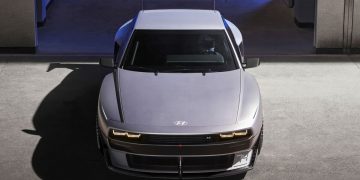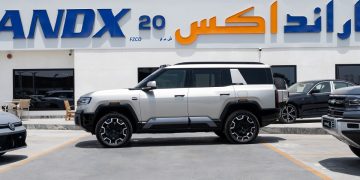A Nostalgia-Fueled Revolution Across Fiat, Peugeot, and Beyond
As the automotive world surges into an electrified future, a curious phenomenon is unfolding at Stellantis. Instead of purely chasing minimalist futurism or sleek cyberpunk forms, the automotive conglomerate—home to brands like Fiat, Peugeot, Opel, and Citroën—is embracing retro flair with EV powertrains. In 2025, this isn’t just a design exercise. It’s a core strategic move, fusing vintage charm with cutting-edge technology. And it’s not niche anymore—it’s mainstream.
The Fiat Topolino, the Peugeot E-5, the Opel Manta GSe ElektroMOD, and the Citroën My Ami Pop aren’t isolated experiments. They’re components of a wider vision. Stellantis isn’t just reviving history—it’s using it to rewire emotional connection in an electric age. With increasingly crowded EV segments and diminishing design identity among competitors, the group is betting that nostalgia will not only differentiate their products but also soften the intimidating leap into electric mobility.
The STLA Architecture: Memory Meets Modern Modularity
Underpinning Stellantis’ electric retro revival is the STLA platform strategy. Divided into STLA Small, Medium, Large, and Frame, these flexible platforms allow Stellantis to electrify a wide range of vehicles while preserving brand-specific styling cues. Unlike some automakers that push a one-size-fits-all skateboard design, Stellantis uses STLA to ensure each EV—no matter how modern under the skin—can still wear the skin of the past.
This is crucial to models like the new Fiat 500e, which preserves the iconic silhouette of its mid-century ancestor while delivering zippy, emission-free urban mobility. The STLA Small platform allows a short wheelbase, tight turning radius, and urban-optimized battery packaging—all without compromising the proportions that fans associate with la dolce vita.
In the case of the Opel Manta GSe, the STLA Medium platform supports a reinterpretation of the ’70s fastback coupe—complete with pixelated LED lights styled like analog gauges, and a retro-style driver-centric cockpit. These technical backbones allow Stellantis to create vehicles that feel like modern tributes rather than parodies, integrating performance, connectivity, and range in a way that’s invisible to the nostalgic eye but essential to the electric soul.
Cultural Authenticity Is the Cornerstone
At the heart of Stellantis’ retro EV strategy is a deep respect for brand heritage. Unlike other companies that awkwardly paste heritage badges on generic forms, Stellantis allows each division to mine its cultural roots.
Fiat leans into Italian optimism and café-sized cars with models like the electric Topolino and Panda Legend—vehicles that echo post-war simplicity and freedom, but for the modern urbanite. Their charm lies not in opulence or maximalism, but in emotional immediacy. For young drivers and elder fans alike, these cars evoke joy and whimsy in ways that sterile, tech-first EVs rarely do.
Peugeot’s design language evokes French futurism fused with an Art Deco memory. The upcoming Peugeot e-Legend—a throwback to the 504 Coupé—embodies this ethos, blending classic rear-wheel-drive proportions with full electrification, autonomous capability, and screens that mimic analog dials. For Peugeot, retro isn’t about going backward—it’s about elevating familiarity into prestige.
Opel and Vauxhall, long viewed as utilitarian workhorses, now tap into the design freedom of the ElektroMOD era. The Manta GSe isn’t just a concept—it represents how electrification allows old-school sports silhouettes to return, albeit with sustainable purpose. Citroën, meanwhile, takes quirkiness seriously, positioning the My Ami Buggy and Pop not just as EVs, but as cultural artifacts—tiny electric rebels for a world fatigued by seriousness.
Why Emotion Matters More Than Ever
In 2025, EVs are no longer rare. Every automaker offers something electric. And yet, surveys still show many consumers—especially in Europe—feel emotionally detached from EVs. They’re seen as tools, not passions. They function efficiently but lack charisma.
This is where Stellantis breaks away. By blending design nostalgia with electric engineering, it creates cars that feel alive. The new electric Fiat 600 doesn’t just transport—it charms. The Peugeot E-5 isn’t just efficient—it inspires. These aren’t machines made to be spec-sheet winners. They’re designed to feel like friends—familiar, stylish, and proudly different from the anonymous crossovers dominating roads and charging stations.

This strategy plays particularly well with Gen Z and millennial buyers, many of whom never experienced the original versions of these cars, but adore their style through Instagram and film. Retro EVs offer them a way to stand out while staying climate-conscious—a rare mix in today’s greenwashing-saturated market.
Compact, Electric, and Distinctively European
Another subtle but significant reason Stellantis leads in retro EVs is geography. European cities are dense, old, and increasingly closed to internal combustion. Compact, agile EVs with tight dimensions and low energy consumption are perfectly suited to this environment. Instead of trying to mimic American-size crossovers, Stellantis leans into Europe’s unique scale and culture.
A Topolino is as much a city charm as it is transport. The electric Panda’s boxy profile is ideal for Milanese alleyways. These cars are reflections of the places they’re built for. When that cultural alignment is achieved, the EV stops being a compromise and becomes an enhancement.
In comparison, many EVs from other global manufacturers feel either too futuristic or too detached from place. Stellantis’ approach is place-rooted, visually nostalgic, and delightfully small when the market trends large.
Affordability Meets Personality
The EV space is plagued by a perception that style equals luxury. Many design-forward EVs, like the Porsche Taycan or Tesla Model S, are priced out of reach for the average buyer. Stellantis challenges this dynamic by making retro styling available at a modest price.
The Fiat 500e, for example, offers premium interior finishes, circular motifs, and dual-tone seats in a package accessible to young city drivers. The Citroën Ami remains one of the most affordable EVs in Europe—technically a quadricycle—but delivers unmatched character-per-euro. Even the upcoming electric Peugeot 208 models maintain playful design language without inflating price tags.
This democratization of charm—where emotion and affordability coexist—is key to Stellantis’ success. It proves that you don’t need $80,000 to drive something that sparks joy.
Marketing Nostalgia in a Data Age
The storytelling around these retro EVs is also strategic. Stellantis leans on memories, movie clips, vintage photos, and analog-style advertising to amplify emotional resonance. In contrast to sterile tech launches, these campaigns use warm tones, historic references, and tactile metaphors. The message is clear: these cars are not just about new energy—they’re about rediscovered identity.
Digital platforms like Instagram and TikTok are flooded with side-by-side comparisons between old and new. A 1970s Peugeot coupe next to its EV reincarnation. A sepia-toned Fiat Panda parked beside its electric twin. This duality—past and present in one frame—captures attention and builds loyalty.
Beyond Retro: What’s the Long Game?
Of course, Stellantis isn’t planning to live in the past forever. Its retro EVs are not endpoints—they’re on-ramps. By drawing consumers in with charm and emotion, the company creates lifelong brand advocates who are more likely to stay within the Stellantis ecosystem as future models evolve toward sleeker, more futuristic design.
Retro EVs serve as bridges: between generations, between gas and electric, between hesitancy and excitement. They invite customers into an electrified future not by pushing fear or guilt, but by offering familiarity and delight.
Once consumers fall in love with an electric Panda or Manta, they’re far more likely to consider a next-generation Peugeot E-3008 or Fiat Crossover EV. Stellantis understands that emotional buy-in happens first—before infrastructure, incentives, or even performance.
Conclusion: When Electric Meets Iconic
Stellantis’ retro electric strategy isn’t just a design fad—it’s a calculated, platform-enabled, emotionally intelligent business move. It connects nostalgia with sustainability, playfulness with practicality, and heritage with high tech.
In an era where sameness threatens to define EV design, Stellantis cars stand out—not just on the street, but in the imagination. And that, ultimately, is why their electric renaissance resonates: it’s not just about changing fuel types. It’s about rediscovering what makes cars personal, expressive, and unforgettable.


































Discussion about this post